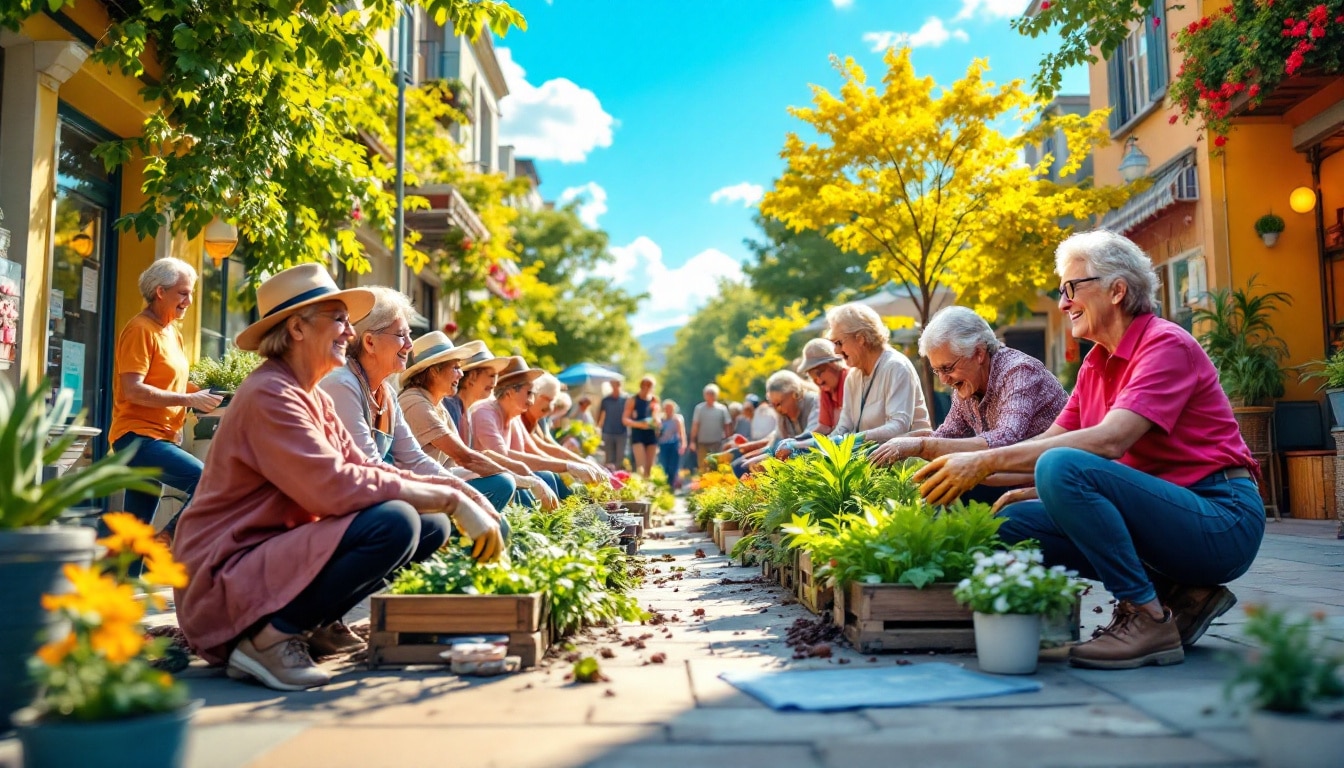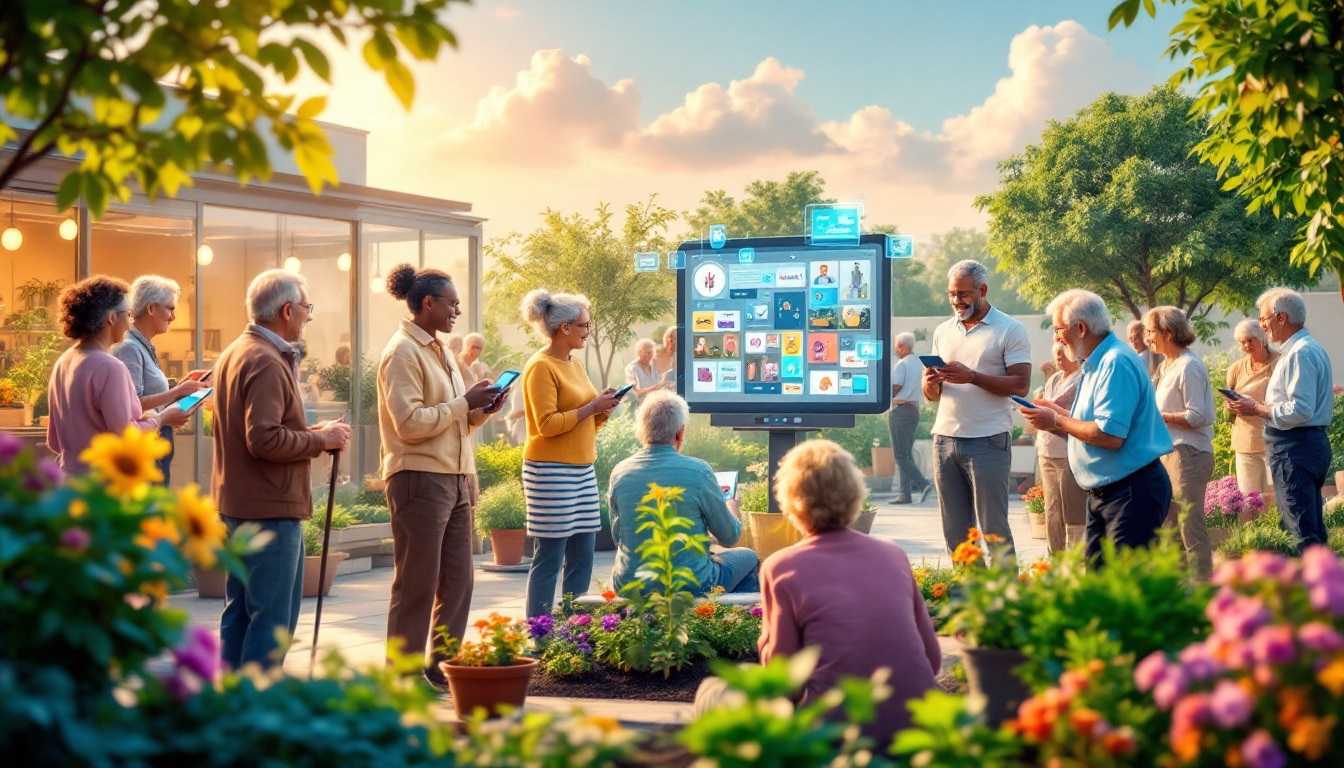Welcome to our site, where every visit is precious.We are committed to providing a personalized and secure experience.The use of cookies helps us achieve this goal.
We use cookies and data to deliver and maintain Google services. This allows us to track interruptions and protect against spam, fraud, and abuse. We also measure audience engagement and site statistics to understand how our services are used and to improve their quality. By choosing “Accept All,” we can develop and improve new services, as well as measure the effectiveness of ads. Additionally, we display personalized content based on your settings and show ads tailored to your preferences. If you prefer “Reject All,” we will not use cookies for these additional purposes.

Understanding the rise of the silver economy
With the aging of the global population, the silver economy is experiencing significant growth. This trend is particularly evident in countries like China, where the challenges related to demographic aging are driving innovation and market adaptation. The silver economy encompasses a range of sectors such as health, tourism, housing, and financial services, all oriented towards the needs of seniors. Understanding this dynamic is essential for businesses looking to capitalize on this growing market. By exploring how China’s silver economy is poised to thrive, key opportunities can be identified, and future developments in this sector can be anticipated.
Identifying the specific needs of aging populations
To capitalize on the silver economy, it is crucial to identify the specific needs of older populations. This includes not only health and wellness needs but also expectations in terms of leisure, mobility, and safety. For example, many seniors seek technological solutions that simplify their daily lives, such as health monitoring devices or simplified communication platforms. Furthermore, the offering of tailored services to professionals and caregivers of the elderly can also represent a lucrative market. By referring to analyses like those presented in The Silver Economy: Unlocking the potential of the aging society, businesses can better understand the expectations and preferences of this demographic.
Developing tailored products and services
The key to success in the silver economy lies in the creation of tailored products and services that meet the needs of seniors. This can include accessible housing, personalized health services, or recreational activities designed for this age group. For instance, the development of senior residences equipped with smart technologies can address the growing demand for comfort and safety. Similarly, offering continuing education services or wellness programs contributes to improving the quality of life for elderly individuals. Innovative initiatives like those detailed in Discovering new horizons show how businesses can diversify their offerings to meet the varied expectations of seniors.
Investing in technologies that simplify seniors’ daily lives
Technological innovation plays a crucial role in the silver economy. Technologies designed to ease the daily lives of seniors include connected medical devices, health management applications, and home security systems. Investing in these technologies not only improves the quality of life for users but also opens new market opportunities for businesses. Moreover, augmented and virtual reality technologies can offer enriching experiences in entertainment and training, tailored to the needs of elderly individuals. By examining case studies like those presented in The Silver Economy: A Promising Potential for the Future, one can identify the most promising technological trends.
Adopting a targeted marketing strategy for seniors
A targeted marketing strategy is essential to effectively reach aging populations. This involves a deep understanding of the preferred communication channels of seniors, as well as messages that resonate with their values and needs. For example, advertising campaigns can highlight aspects of safety, comfort, and independence, which are often priorities for this demographic. Additionally, using authentic testimonials and inspiring stories can strengthen the emotional connection with older consumers. Incorporating clear visual elements and simplified user interfaces in digital campaigns also facilitates seniors’ engagement with the offered products.
Establishing suitable infrastructures
To support the silver economy, it is essential to put in place suitable infrastructures. This includes not only accessible housing and health centers but also public spaces and transportation adapted to the needs of seniors. Well-designed infrastructures promote the autonomy and mobility of seniors while improving their quality of life. For example, creating secure pedestrian zones and easily accessible public transportation can encourage seniors to remain active and engaged in their community. Additionally, suitable infrastructures also promote access to digital services, which are essential for maintaining social connections and accessing online services.
Fostering training and digital inclusion for seniors
Digital inclusion is an essential aspect of the silver economy. With the rise of digital technologies, it is crucial to provide tailored training for seniors so they can effectively use modern tools. This includes training workshops on using smartphones, computers, and health applications. Moreover, promoting digital literacy helps elderly individuals stay connected with their family, friends, and communities, while enabling them to access essential online services. Initiatives like those described in China’s silver economy ready to thrive demonstrate the importance of continuous education in fully integrating seniors into the modern economy.
Encouraging intergenerational partnerships
Intergenerational partnerships play a crucial role in developing the silver economy. By collaborating with young and dynamic organizations, businesses can create innovative solutions that meet the needs of seniors while benefiting from the creativity and agility of younger generations. These collaborations can lead to mentoring programs, product co-creation initiatives, or community projects aimed at strengthening the bonds between generations. Fostering these partnerships not only diversifies offerings but also creates a more inclusive and supportive society.
Exploiting opportunities in senior tourism
Senior tourism represents a significant opportunity within the silver economy. Seniors often have the time and resources to travel, seeking enriching experiences tailored to their needs. Tourism businesses can capitalize on this trend by offering customized stays, including health services, cultural activities, and suitable infrastructures. For example, destinations such as beach regions or historical sites can be optimized to accommodate older travelers by providing accessible facilities and a variety of leisure programs. By following trends observed in China’s silver economy ready to thrive, tourism stakeholders can develop innovative and attractive offers for seniors.
Supporting health and wellness initiatives
Health and wellness are at the heart of the silver economy. Initiatives aimed at improving the quality of life for seniors include home care services, adapted fitness programs, and personalized nutrition services. Investing in these areas not only meets a growing demand but also contributes to the overall well-being of aging populations. Furthermore, businesses can collaborate with health professionals to develop innovative solutions, such as telehealth consultations or health monitoring apps. These initiatives, such as those described in The Silver Economy: Unlocking the potential of the aging society, show how a well-being-centered approach can strengthen actors’ positions in this expanding market.
Promoting the active participation of seniors in society
Encouraging the active participation of seniors in society is essential to maximize the benefits of the silver economy. This includes promoting community engagement, participation in the labor market, and involvement in volunteer activities. Seniors possess a wealth of experience and knowledge that can be leveraged across various sectors, thereby fostering a more dynamic and interconnected society. Furthermore, by creating opportunities for older individuals to remain active and involved, businesses and communities can reduce social isolation and improve overall quality of life. Initiatives aimed at integrating seniors into educational or mentoring programs illustrate this positive dynamic effectively.
Adapting public policies to support the silver economy
Public policies play a determining role in supporting the silver economy. Governments can establish favorable regulations, tax incentives, and subsidy programs to encourage businesses to invest in services and products for seniors. For example, subsidies for health technologies or tax deductions for companies developing suitable housing are effective measures. Moreover, promoting initiatives for continuous training and education for seniors strengthens their active participation in the economy. Public policies, by supporting a robust infrastructure and inclusive programs, can create an environment conducive to the growth of the silver economy.
#>








